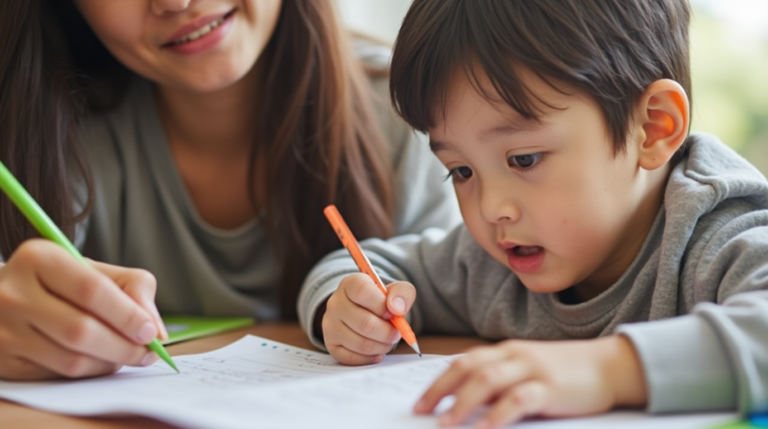Effective Ways to Discipline Without Yelling or Punishment
Table of Contents
Effective Ways to Discipline Without Yelling or Punishment
Parenting is tough, and discipline is one of the hardest parts. But what if you could guide your child’s behavior without yelling, threats, or harsh punishments—while still teaching responsibility and respect?
Science-backed discipline isn’t about control—it’s about connection, teaching, and setting clear boundaries with empathy. This guide reveals practical, peaceful strategies that really work.
1. Why Yelling & Punishment Backfire
“Discipline is helping a child solve a problem. Punishment is making a child suffer for having a problem.” — Dr. L.R. Knost
The Problems with Traditional Discipline
✔ Yelling triggers fear, not learning (activates fight-or-flight mode)
✔ Punishments often lead to resentment, not responsibility
✔ Time-outs can feel like abandonment to young kids
What the Research Says:
- Children disciplined with yelling show increased aggression (University of Pittsburgh)
- Harsh punishments correlate with lower self-esteem and higher anxiety (APA)
2. The 5 Pillars of Peaceful Discipline
1. Connection Before Correction
- “I see you’re upset. Let’s figure this out together.”
- Works because: Kids listen when they feel safe.
2. Natural Consequences
- “If you don’t wear your coat, you’ll feel cold.” (Not: “No TV because you forgot your coat!”)
- Works because: Links actions to real-world outcomes.
3. Problem-Solving Together
- “The crayon broke when you threw it. How can we fix this?”
- Works because: Teaches accountability.
4. Positive Reinforcement
- “You cleaned up your toys without being asked—that’s so helpful!”
- Works because: Encourages repetition of good behavior.
5. Clear, Calm Boundaries
- “I can’t let you hit. Let’s use words when you’re angry.”
- Works because: Consistency builds trust.
3. Age-by-Age Discipline Strategies
| Age | Challenge | Peaceful Response |
| Toddlers (1-3) | Throwing food | “Food stays on the plate. If you throw, meal time is over.” (Follow through calmly) |
| Kids (4-7) | Refusing chores | “First toys away, then playground. Let me know when you’re ready!” |
| Tweens (8-12) | Backtalk | “I’ll listen when your voice sounds like mine.” (Walk away if needed) |
| Teens (13+) | Broken curfew | “I’m glad you’re safe. Let’s discuss how to rebuild trust tomorrow.” |
4. The “Reset” Method for Meltdowns
- Pause (Breathe before reacting)
- Connect (“You seem really frustrated.”)
- Guide (“Let’s try a do-over with gentle hands.”)
Example:
Child screams about homework →
*”Wow, you’re really stuck on this math problem. Want to tackle it together after a 5-minute break?”*
5. When Kids Test Limits (Without Losing Your Cool)
- For power struggles: “You decide—wear the red shoes or blue shoes.”
- For defiance: “I see you chose not to ___. That means ___ will happen.” (State consequence calmly)
- For sibling fights: “I’ll be in the kitchen when you’re ready to solve this fairly.”
6. What to Do When You Lose Your Temper
- Repair: “I shouldn’t have yelled. Let’s try again.”
- Model: “I’m taking 3 deep breaths to calm down.”
- Prevent: Identify triggers (hunger? stress?) and plan ahead.
Conclusion
Discipline without yelling or punishment isn’t permissive—it’s authoritative parenting at its best. By focusing on teaching over punishing, you’ll raise kids who:
✔ Self-regulate emotions
✔ Internalize good behavior
✔ Trust you as their guide
Key Takeaways:
- Connection > Control: Kids behave better when they feel better.
- Natural consequences teach better than arbitrary punishments.
- Your calmness is contagious—even during storms.
FAQ
Q: Isn’t this just letting kids get away with misbehavior?
A: No—it’s holding boundaries with empathy. Example: “You chose to hit, so we’re leaving the park to keep everyone safe.”
Q: How do I stop yelling when I’m overwhelmed?
A: Try the “H.A.L.T.” check: Are you Hungry, Angry, Lonely, or Tired? Address your needs first.
Q: What if my child ignores calm discipline?
A: Stay consistent. “I see you’re not ready to ___. We’ll try again in 10 minutes.”
Q: Are time-outs ever okay?
A: Reframe as “time-ins”—stay nearby and help them regulate.
Final Thought:
“Children need love most when they deserve it least.” — Erma Bombeck







